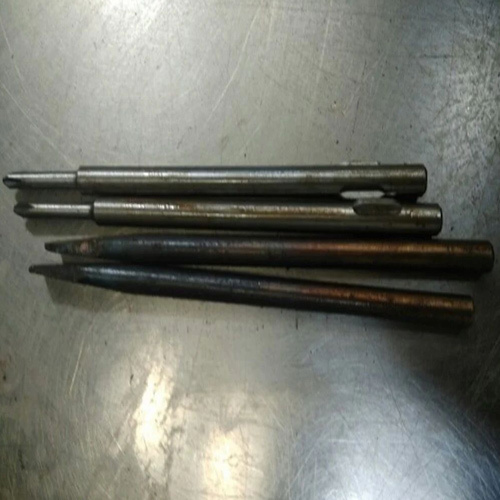Metallurgical Analysis Services
Metallurgical Analysis Services Trade Information
- Minimum Order Quantity
- 500 Kilograms
- Payment Terms
- Cash Against Delivery (CAD), Cash on Delivery (COD), Cash Advance (CA), Cash in Advance (CID), Cheque
- Main Domestic Market
- All India
About Metallurgical Analysis Services
Key Aspects ofMetallurgical Analysis:
1. :
o : Identifying materialswith the right properties for specific applications (e.g., automotive,aerospace, construction).
o : Ensuring that metalsand alloys meet the desired specifications and standards.
o : Determining the rootcause of failures (e.g., fractures, corrosion) in metal components.
o : Improving theefficiency and outcomes of metallurgical processes like casting, welding, orheat treatment.
2. :
o :
: Involves examining metal surfaces at magnificationsfrom 50x to 1000x to reveal grain structure, phase distribution, and otherfeatures.
: Provides higher resolution images of microstructuresand allows for detailed surface and fracture analysis, often coupled withEnergy Dispersive X-ray Spectroscopy (EDS) for elemental analysis.
: Used for extremely detailed analysis at atomic orsub-atomic scales.
o :
:Identifies the elemental composition of metals and alloys. These methods areused to ensure that the correct alloying elements are present in the rightproportions.
: Involves the dissolution of metal samples in variousacids and subsequent chemical reactions to determine elemental composition.
: Helps identify phases and crystalline structurespresent in the material.
o :
: Measures the strength, ductility, and elasticity ofmetals by stretching a specimen until it breaks.
: Assesses a material™sresistance to indentation, which correlates to its overall strength and wearresistance.
: Determines the toughness of the material, or itsability to absorb energy under sudden loads or shocks.
: Assesses the material's resistance to repeatedloading, helping predict the material's life cycle under dynamic stresses.
o : Thesetechniques measure hardness at the microstructural or nanometer scale,providing insight into properties like grain boundary strength and phasedistribution.
o : Examining fractured metal components under amicroscope to identify the mode of failure, whether it™s brittle fracture,ductile fracture, fatigue failure, or corrosion-related.
3. :
o : Focuses onnumerical data to analyze aspects like grain size, phase volume fraction, andmicrostructure uniformity.
o : Involves visualinspection and qualitative assessment of the metal™s microstructure, includingits overall integrity and uniformity.
o :
and Differential Scanning Calorimetry (DSC):Measure how materials respond to temperature changes, identifying phasetransitions like melting, crystallization, and other temperature-dependentphenomena.
o : Studying theresistance of metals to corrosion or wear under various environmentalconditions (e.g., saltwater, high humidity, or acidic environments).
o : Evaluatingphase diagrams to understand how a material behaves under different temperatureand composition conditions, guiding heat treatment processes and alloy design.
4. :
o : Identifying newmaterials or alloys with superior properties (e.g., lightweight materials foraerospace or highly resistant alloys for extreme conditions).
o : Improvingmetalworking processes like casting, forging, welding, and heat treatment toenhance material performance.
o : Diagnosing andunderstanding failures in metal components to prevent future incidents, whethercaused by fatigue, corrosion, or improper alloy composition.
o :Ensuring that metal products, from construction steel to precision-engineeredcomponents, meet the required specifications and standards.
5. :
o (Steel, Cast Iron):Analyzed for properties like carbon content, microstructure, and hardness.
o (Aluminum, Copper,Titanium, etc.): Focus on elemental composition, corrosion resistance, andphysical properties.
o (e.g., Stainless Steel, Nickel Alloys): Specialattention is given to phase distribution, heat treatment response, andstrength.
6. :
o o 7. :
o : Advanced analysis at the nano-scale allows forenhanced understanding of material properties at atomic levels, improvingmaterial design.
o 3DPrinting of Metals: Analysis of3D printed metals, which involves studying how the printing process affectsmicrostructure and mechanical properties.
Summary:
Metallurgical analysis is an essential processfor ensuring that metals and alloys are suitable for their intendedapplications, whether for strength, corrosion resistance, or durability.Through a combination of chemical, mechanical, and microscopic techniques,metallurgists can comprehensively evaluate materials to optimize theirperformance and prevent failures. It plays a crucial role in industries such asaerospace, automotive, manufacturing, and construction, ensuring safety andfunctionality across the use of metal components.
- Minimum Order Quantity
- 500 Kilograms
- Main Domestic Market
- All India

Price:
- 50
- 100
- 200
- 250
- 500
- 1000+



